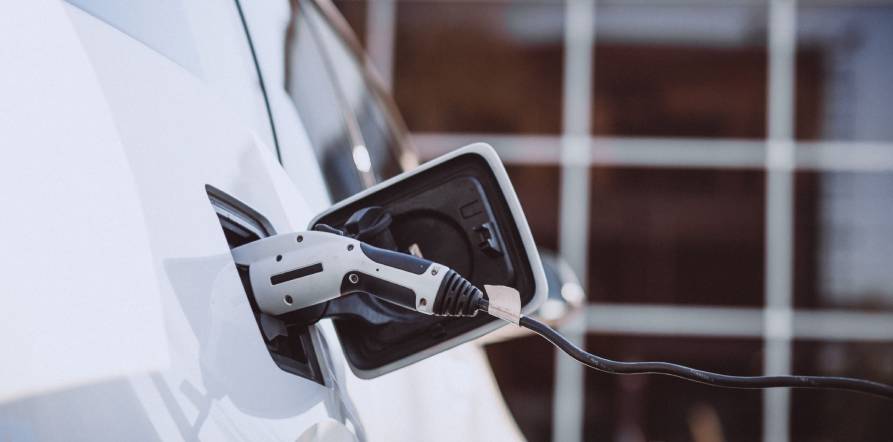
With 55% of India’s crude oil consumption owing to the automobile sector and India
being the third largest greenhouse gas emitter in 2019 having 22 out of 30 of the
World’s most polluted cities and a large part of its population breathing air 10 times
more polluted than the levels prescribed by WHO, the need to sustainably grow the
mobility ecosystem, both from an economic and environmental perspective has been
necessitated.
So, while we all do recognise that electrification is the need of the hour, it is evident
that this highly depends on innovation, R&D and Government incentives. Adoption
of EVs has the potential to disrupt the automotive market and there is no dearth of
Government incentives either. However, lack of adequate infrastructure and the
unaffordable price seem to be the two main roadblocks.
Studies have pointed out that India has only about 650 charging stations and this
number goes in lakhs in countries such as China and this is mainly due to the lack of
private parking spaces in India. According to Maruti Suzuki, around 60% of the
population doesn’t own or have access to private parking spaces and this points to a
major problem when it comes to charging EVs leading to a low inclination towards
their purchase.
There are a number of other reasons that the EV revolution has been slow to take off
in India. To begin with, the average cost of an EV in India happens to be about two to
three times higher than that of a vehicle run on traditional fuel. Then comes the
scarier bit- ‘range anxiety’- the fear we have of the battery running out of power while
leaving us stranded in the middle of nowhere. Reliance on battery imports and other
parts, inadequate and unreliable electricity supply in many parts of India, limited
selection of vehicles on offer and the lack of provisions for maintenance and repair of
EVs are other factors holding this segment back.
In contrast, there are several countries in Europe who are working at overcoming
these challenges. In fact, in Norway, electric car sales exceeded internal combustion
engine car sales for the first time in 2017 as a network of rapid chargers is being
installed across Norway, Denmark, Sweden and Germany. Several breakthroughs
have been made as this complex project spans countries, targeting the key road
networks while keeping in mind the typical battery range and driver behavior to
ensure charging points are installed in the right place to guarantee complete
coverage.
Several other countries have also adopted impressive practices to make the EV
segment viable. London has exempted electric vehicles from the congestion tax as
well as the road toll. UAE in the recent years has focussed on greater incentives and
better federal level integration to trigger a shift towards green mobility. It also
focuses on getting residents used to the facilities apart from simply having the
infrastructure in place. The fast urbanizing Sub-Saharan African region also urgently
needs a transport alternative to stave off the growing burden of fuel dependency and
subsidies, as well as an electricity storage solution to leverage their abundant
renewable energy sources and this is where EVs powered by electricity and running
on battery solutions offer the ideal solution and a positive landscape for the
development of the segment.
I feel that the recent indications of continuing shift from direct subsidies to policy
approaches that rely more on regulatory measures including zero-emission vehicles,
mandates and fuel economy standards have set clear long term signals to the auto
industry and consumers that support the transition in an economically sustainable
manner for Governments.
Pursuant to the ongoing pandemic and the stringent nationwide lockdown, skies in
the national capital turned an azure blue and allowed residents to breathe normal air
after like an eternity. Air pollution dipped by 79% during the lockdown and India’s
CO2 emissions fell for the first time in what? 40 years…due to the reduced emissions
from transportation (road and aviation) and industries. In fact researchers stated
that if these low levels of pollution from the lockdown period are maintained, India’s
annual death toll could reduce by 6.5 lakhs. Here comes the need for a rapid
adoption of EVs to maintain a new normal and we all do realise it at the end of the
day. But this is easier said than done.
Moreover, there are several other concerns as well which I feel need to be addressed
before the shift to EVs accelerates. Primarily, most of the ancillary industries that
have developed over the years to supply parts for the IC engines would be
overthrown rendering a considerable part of the population jobless. Further, an
efficient way to discard the lithium-ion batteries needs to be worked out to prevent
lethal consequences. And last but perhaps the most relevant- unless the method and
source of manufacturing electricity changes from thermal to other renewable and
non-polluting sources (such as wind, nuclear or hydroelectric), there is no change we
will be making in the levels of pollution as a whole. Only the location where the
pollution is emitted would be changing from cities to the outskirts near the power
grid stations.
The government’s vision of an electrified future of mobility requires itself to be the
largest and most important contributor to its targets, as it seeks to achieve its key
aim of driving a new age of sustainable growth while preserving the Indian
ecosystem’s legacy and relevance. Global precedents show that charging
infrastructure drives EV adoption, instead of playing a demand-based catch-up.
While India is on its way towards building the charging infrastructure and
addressing the other major challenges that lie ahead of the EV segment, the market
for hybrid vehicles is immense and should be seized to build consumer confidence
and trust in the transition period.